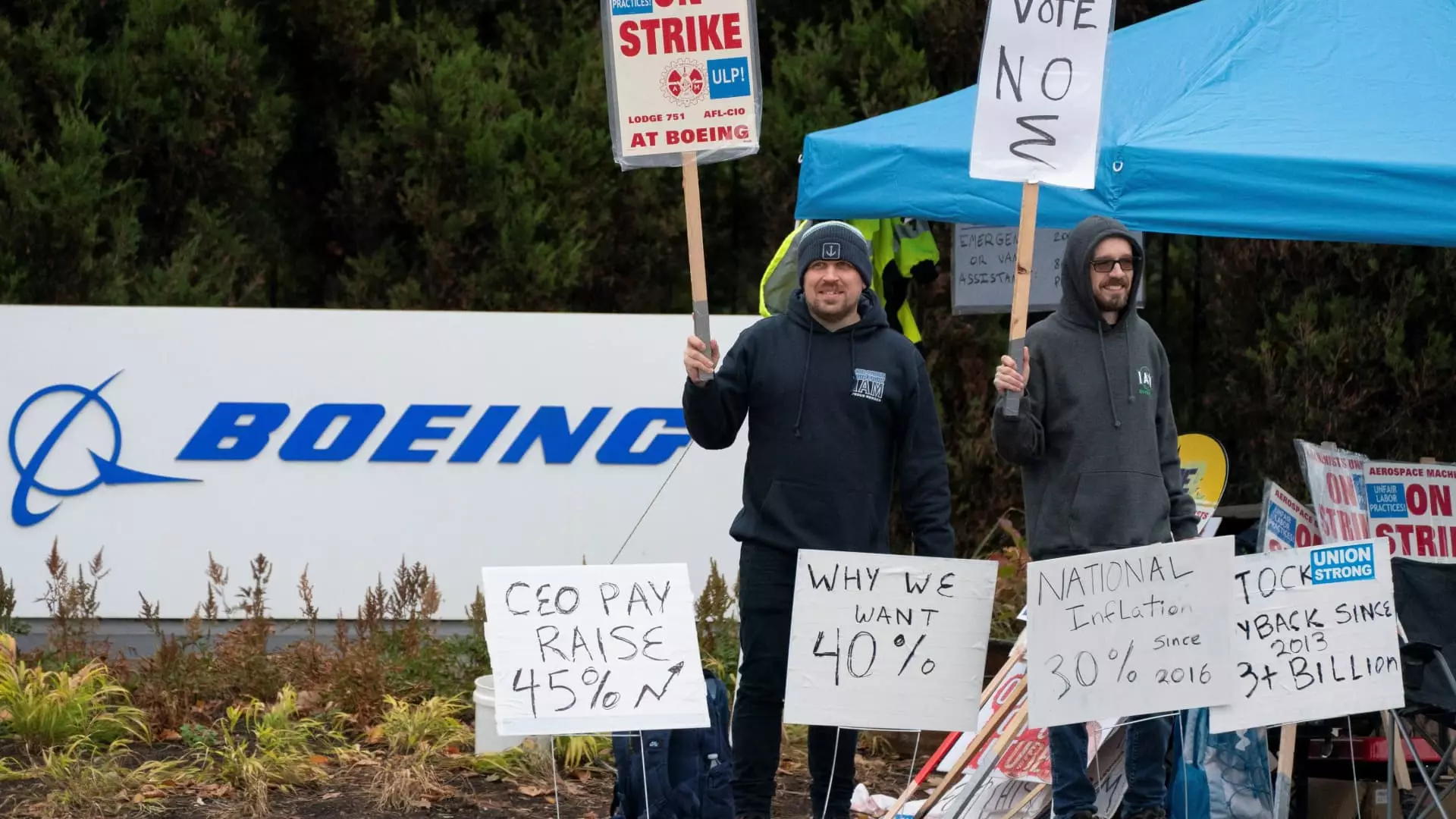After an intense period of negotiation, Boeing and the International Association of Machinists and Aerospace Workers District 751 have made significant strides towards ending a strike that has lasted nearly seven weeks. With a vote scheduled to take place on Monday, the union has expressed strong encouragement for its members to approve the new contract. This timing is crucial as both parties are keen to reach a resolution, allowing Boeing’s production lines to resume and workers to regain their livelihoods. The union’s leadership has indicated that they believe they have come as far as possible in negotiations and that further delays might risk deteriorating the proposed benefits. Their message underscores a sense of urgency and a determination to secure the most favorable outcome for the workers.
The strike, which began on September 13, was prompted by a rejected tentative agreement. Over 32,000 machinists, primarily located in the Seattle area, walked off the job in search of better compensation, an echo of wider labor movements that have gained traction across the United States. This trend, characterized by workers demanding fair pay in light of rising living costs—particularly in urban environments dominated by tech giants—has positioned Boeing’s machinists at a pivotal junction. The strike has not only extended the timeline for Boeing’s recovery from past production flaws but has also aggravated the company’s financial woes. The aerospace giant is still reeling from the impacts of several quality issues, including significant safety concerns tied to the 737 Max series.
At the heart of the new proposal is an attractive offer aimed at appeasing the striking workers. The updated contract proposes a 38% wage increase over four years, a notable improvement from the previous offer of 35%. Such increments reflect a total compounding increase approaching 44% over the contract duration. Additionally, Boeing has offered a one-time ratification bonus of $12,000, or an alternative $7,000 bonus paired with a $5,000 401(k) contribution. The average machinist’s salary is projected to reach around $119,309 by the end of the contract, highlighting Boeing’s readiness to invest in its workforce despite facing financial turbulence. This willingness to improve compensation packages signals a recognition of workers‘ value within a company under immense pressure to stabilize its operations.
The challenge for Boeing is not just the immediate financial implications of the strike but also the broader context in which it operates. With the Seattle area experiencing an influx of high-paying jobs in the tech sector, the cost of living has surged, placing immense pressuring on workers‘ earnings in traditional industries such as aerospace manufacturing. As companies like Microsoft and Amazon expand their workforce, manufacturing entities are compelled to respond to competitive wage demands to attract and retain skilled labor. This labor shortage situation has made negotiations increasingly challenging for employers like Boeing, who must balance maintaining operational profit margins with the need to offer competitive pay and benefits to ensure workforce stability.
Ultimately, the forthcoming vote represents more than just a gain for Boeing’s machinists—it signifies a tentative step towards reconciling workforce dissatisfaction with corporate realities in a rapidly changing market environment. The union’s call to approve the contract echoes a desire for stability amid a brewing storm of economic pressures and competitive job markets. If accepted, this agreement could lay the groundwork for more fruitful negotiations in the future, not only for Boeing’s employees but across the aerospace sector as a whole. It’s a pivotal moment that could chart a new course for labor relations in an industry that has often been resistant to change, setting a precedent for how similar conflicts may be resolved going forward.
The outcome of this negotiation holds significant implications not just for Boeing and its workforce, but for the broader landscape of labor relations and corporate practices in the U.S. as a whole. As companies seek to maintain their competitive edge while addressing the rightful demands of their employees, the case of Boeing serves as a crucial example of the balancing act between profitability and fair labor practices in an evolving economic landscape.


Napsat komentář